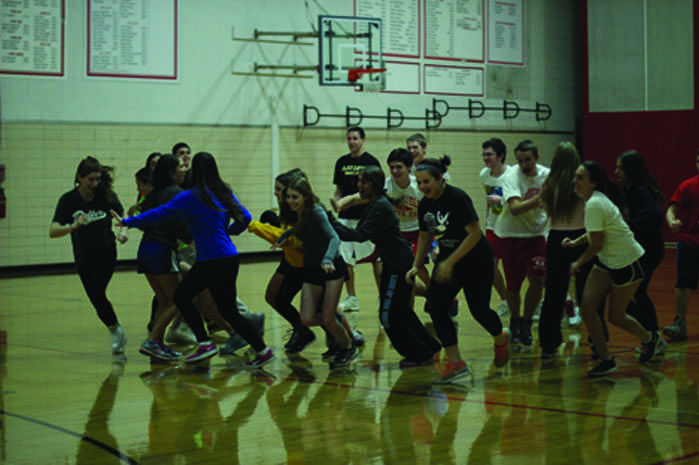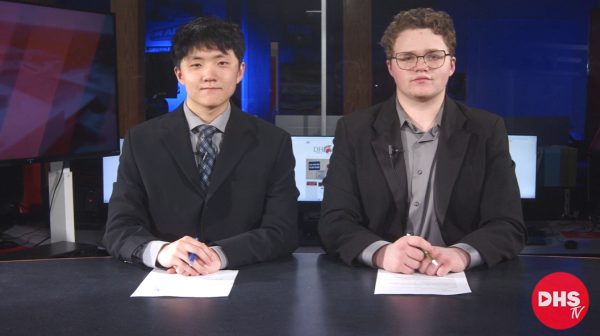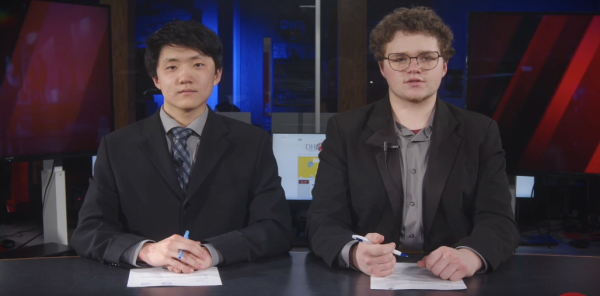New P.E. leader program met with uncertainty, promises growth
Tag, You’re it: All P.E. leaders-in-training learn about the positive effects of cardiovascular endurance. Every day before the start of activities, they go through a warm-up to properly prepare themselves. Past warm-ups include duck, duck, goose; freeze tag; or drip, drip, drop.
This year, the physical education (P.E.) leader program discontinued its application process, opening its ranks to a larger pool of students. This position affords seniors the opportunity to be placed in a freshman or sophomore P.E. class and assist in teaching lessons. Before a leader is “fit to lead,” he must undergo a training course during junior year. The precursor to this course has traditionally been a formal application process, consisting of letters of recommendation, an interview and an assessment of the applicant’s ability to successfully teach a lesson. This year interested students can directly enroll in the junior training course taught by P.E. teacher Cristee Lempa. All accepted leaders will be distributed among P.E. classes of all age groups, including junior and senior year P.E. courses.
“The old application is gone and it is now open enrollment, meaning we are allowing the class to go more than two sections. By making it open enrollment, we want to place fewer leaders in each class and open it up to junior and senior classes, giving leaders a better chance to lead. Most schools around this area are already on this format,” Lempa said.
At the end of each school year, Lempa surveys her students and department about possible improvements to the program. After receiving positive feedback from previous leaders about potential improvements, Lempa decided to move forward with the current set of changes.
“Feedback I received from last year’s juniors was really positive. First, one of my students was really on board and so that kind of spiraled and we started to wonder if we really could change the attitude about seniors leading in senior and junior classes. We started to research and have more and more conversations about it,” Lempa said.
The hope is that eliminating the application will encourage a greater number of interested students to register for the class. So far, in its first year, there are three full sections of juniors taking part in the program. Lempa is teaching them that leadership functions independent of age.
“So many people used to apply and we had to turn so many of those people away from this program simply because we didn’t have space,” Lempa said. “That’s not true anymore. We do have space. We can create space within those junior and senior classes. Therefore, anyone can experience this.”
Concern about the new program among students has been accompanied by praise for its possibilities. Senior Haley Achler leads a freshman P.E. class and experienced the old application process last year.
“The good thing about last year’s program was that it allowed for the most qualified people to get the spot. That might be harder to see this year. Still, it’s also pretty interesting that seniors can lead senior classes now; I don’t know how it will work, but it has potential,” Achler said.
Regardless of what shape the program takes, Achler emphasized the importance of the junior training course, where she learned the most important qualities of being a leader. Junior Emily Shapiro is currently enrolled in the P.E. leader program.
“It’s a really good way to learn all your leadership skills. I know last year, if you were denied, you missed that opportunity to learn how to lead and create activities. Everyone has that opportunity this year,” Shapiro said.
After several weeks of the new program, Shapiro and her fellow classmates are mainly pleased with the results. Still, she shares some concerns with other juniors, including the addition of leadership in junior and senior courses.
“That seems like a lot of pressure, especially because you have a totally different relationship with people your own age, but it’s hard to say if it works or not because we haven’t seen it happen,” Shapiro said.
Lempa anticipated these concerns. However, she is confident that students will both adapt to and benefit from the changes.
“I do think, though, that they are nervous or on edge. For a couple of years, some people will naturally be awkward about the change, but they will adapt,” Lempa said.
The final concern students raise is that they may not be accepted into the senior leader program at the conclusion of the junior course. While Lempa will be evaluating students throughout the year, she discounts the possibility that any student who is working at their highest level will be denied from the program. This, she said, would only happen under extreme circumstances, such as a violation of school code.
“I would hope to be having conversations with them if they are not demonstrating growth. I think the people who chose to take the class last year are the same people choosing to take the class this year,” Lempa said. “The class is a sacrifice, but they are still choosing to do the work and they are still choosing to be dedicated.”
For now, Lempa is moving forward with confidence. She knows that the goal of the program is to educate and serve the students and to shape them into leaders. This, she says, is more attainable and effective with the new platform. Her first and foremost hope is to continue inspiring students to be leaders.
“I’d like to see these students become inspired to make even more changes so they ask themselves what else they can do to make this place better. I want to encourage them to continue to think and realize that leadership is a great service,” Lempa said.






